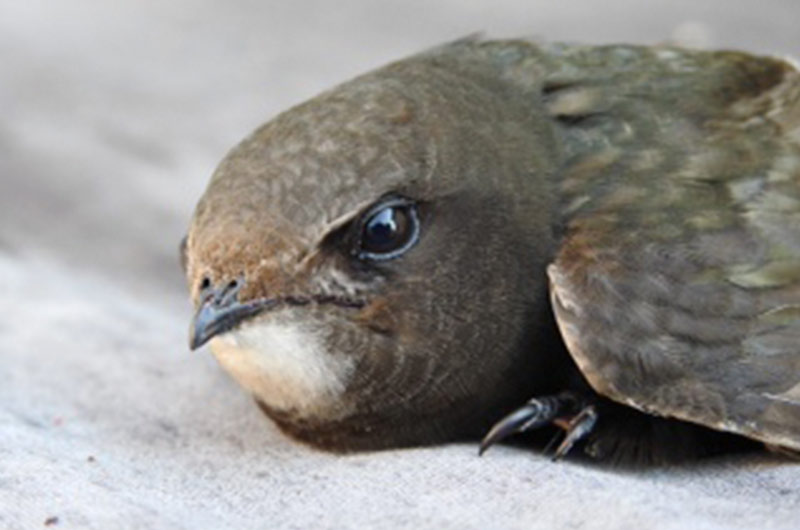Common Swift (Apus apus)
Meet one of NESBiP’s Big 5, the Common Swift. This species is suffering large declines. Principally thought to be due to loss of nesting sites. There are lots of opportunities to assist with identifying nest sites or hotspots (known as screaming parties). Submitting sightings is crucial for protecting them, as developers can be made aware during the planning process.
We asked local common swift champion, Cally Smith, what she loves about swifts and why and how they need our protection. Check out her answers below.
What is a common swift, and why are they locally important?
Common swifts are a migratory bird species which travel to the UK from overwintering grounds in sub-Saharan Africa, arriving here to breed in early May. They rely on our buildings for breeding success and are 100% nest-site faithful. Swifts are the fastest birds in level flight, purely insectivorous and have been around for over 49 million years! Sadly, with a 63% decline in the last 25 years, they are now a red-listed species. Three main factors for decline are nest site loss, global insect decline and the effects of climate change. The common swift lifecycle is globally important.
What can people do locally to protect common swifts?
- Survey each year for swift colonies: locate nesting sites and record your findings with local environmental records centres so they can be protected or colonies enhanced during town planning and regeneration projects. The protection of long-term nesting colonies is vital if swift numbers are to be improved.
- Support the use of swift bricks in all suitable new housing developments. Protecting existing colonies is key, but in addition, we need to provide more nesting opportunities nearby.
- Provide swift nest boxes on buildings and homes where you live. Can you offer a home to a common swift? Include them as part of a community project to help the swifts where you live.
- Learn about them and tell others!
When is the best time to take action for common swifts?
Swifts first start to arrive in May and stay here until September.
Mid-May is the best time to start surveying and looking for sightings. The optimum time for finding nest sites is June and July. Swift sightings and nest site records, noted within the breeding season, should be lodged as soon as possible with the North East Scotland Biological Centre (NESBReC).
Swift nest boxes can be installed at any time of the year. Aim to have them ready for the end of April.
Try to avoid any building repairs that might affect a nesting location in your building. However, please get in touch with Huntly Swift Group – NES Swifts, as it is easy and inexpensive to repair buildings and protect swifts with some early guidance and expertise.
Your top 3 tips for protecting the common swift?
- Survey and record nest sightings in your locality. Protect the existing nesting colonies on your patch.
- Speak out for swift bricks in new builds. Tell your local authority planners.
- Learn about these incredible summer visitors and tell others!
What is your favourite fact about the common swift?
The youngsters do press-ups in the nest site at 4 weeks of age to strengthen their wings for a life of almost continuous flight. A swift fledgling will not land for up to 3 years!
Do you have any good examples people could learn from?
Yes, please get in touch if you would like to learn about them! Here are a couple.
- The Swifts at No30! – Learn how Huntly Development Trust and NE Swifts worked together to regenerate a B and C listed building and protect the swifts using the eaves to nest.
- We need your help! – Learn how you can help swifts and their cousins in your town and villages.
Huntly Swift Group – NES Swifts Facebook Page or huntlyswiftgroup@gmail.com

Swift © Eero Kiuru
A short video to raise awareness of the common swift!

Cally Smith
Chair of Huntly Swift Group – NE Swifts

